#led products manufacturers
Text
SMART LED VAPOR TIGHT
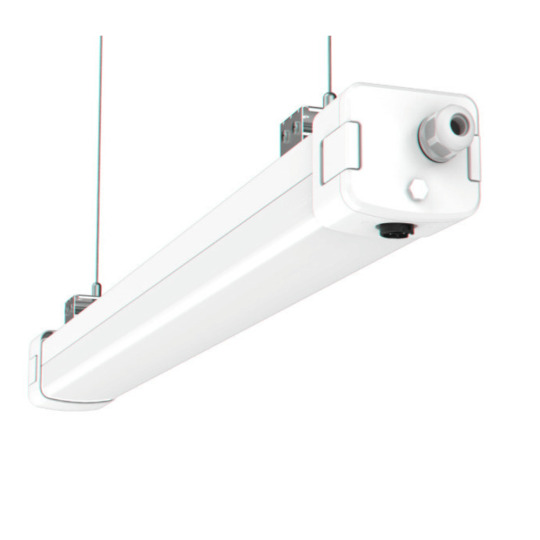
Introducing the Unique Smart LED Vapor Tight / Tri-proof Light – a state-of-the-art lighting solution with several features to offer enhanced flexibility and ease of use. This LED light covers you whether you need lighting solutions for supermarkets, storage units, pathways, garages, or stairwells.
The luminaire is designed to allow you to install sensors or IOT controllers later in time if needed. It features a plug-and-play sensor configuration that allows for easy and convenient installation, and the field-adjustable power and color temperature provide even more flexibility.
The LED Vapor Tight / Tri-proof Light comes with a 0-10V dimming option, and you can choose from among Motion & Daylight sensor, ZigBee Bluetooth, and Wireless Daintree compliant options. With an IP65 rating, this light is built to last through all kinds of outdoor and indoor conditions, and it complies with ETL, DLC Premium, and CE standards.
This product comes with a 5-year limited warranty, and it is easy to install with suspension, ½’’NPT pendant mount, and a range of sensor and wireless options. The various pluggable receptacles available include SR Sensor, MS01 Motion Sensor <50 Ft, MS02 Motion Sensor <40 Ft, ZG01 Zigbee Wireless control, BT01 Bluetooth control, EM – Emergency Backup (not included for 8ft).
Regarding mounting options, the standard chain/cable or surface mount makes it easy to securely and safely mount the light wherever needed. Additionally, you can choose to use the C6 6 ft cord or any other length as per your requirement. Upgrade your lighting solution with the Unique Smart LED Vapor Tight / Tri-proof Light today!
#technoledlights#techno led lights#Techno LED Lights#led wall light manufacturers#led downlights suppliers#looking for led light supplier#led bulb manufacturer near me#led products manufacturers#top led panel manufacturers#led products#led downlights manufacturers#led downlights usa#led downlight factory#led wall light manufacturer#smart lighting industries#lighting industry#industrial outdoor commercial lighting#commercial and industrial lighting#led shoebox parking lot lights#led high bay lighting retrofit#led shoebox lighting fixtures#led retrofit canopy lights#led light fixture manufacturers#down light manufacturer#commercial indoor lighting fixtures#industrial indoor led lighting#commercial led manufacturer#led canopy light manufacturers#outdoor lighting manufacturers usa#industrial high bay led lighting fixtures
1 note
·
View note
Text

LED CENTER BASKET TROFFER LUMINAIRE – TECBTA SERIES
LED Center Basket Troffer Luminaire is high performance lumens per watt offer deepest energy savings. Durable white aluminum body & frosted PC lens. 100% Mercury & Lead Free. Proudly Made in India.
#led wall light manufacturers#led downlights suppliers#looking for led light supplier#led bulb manufacturer near me#led products manufacturers#top led panel manufacturers#led products#led downlights manufacturers#led downlights usa#led downlight factory#led wall light manufacturer#smart lighting industries#lighting industry#industrial outdoor commercial lighting#commercial and industrial lighting#led shoebox parking lot lights#led high bay lighting retrofit#led shoebox lighting fixtures#led retrofit canopy lights#led light fixture manufacturers#down light manufacturer#commercial indoor lighting fixtures#industrial indoor led lighting#commercial led manufacturer#led canopy light manufacturers#outdoor lighting manufacturers usa#industrial high bay led lighting fixtures#industrial led linear bay#led high bay manufacturers#canopy and lights
0 notes
Text
Whirlpool W10861510 Washer Console | HnKParts
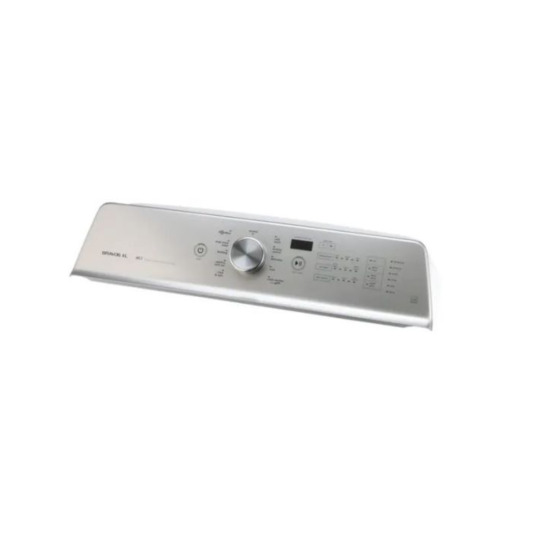
#W10861510#Whirlpool#WashingMachine#Console#HnKParts#HomeAppliance#KitchenAppliance#Manufacturer Name:Whirlpool#Product Number:W10861510#OEM Part Number:W10861510#The Whirlpool W10861510 WhirlpoolConsole is the Engine of your washing machine#housing all of the control elements and display screens you use to operate it. It usually has knobs#buttons#and an LED or LCD screen that allows you to select wash cycles#change settings like water temperature and spin speed#and monitor the wash progress.#700 Nicholas BLVD Suite 105 Elk Grove Village IL 60007#https://www.hnkparts.com/w10861510-whirlpool-console
0 notes
Text
The most well-liked lighting trend of this generation is LED lighting. That being said, as more and more people become aware of the advantages that switching can offer, the movement will only gain momentum. In the long run, these lights are more affordable for households, have greater environmental benefits, are more lasting than standard bulbs, and allow for greater creative application.
#LED Products Manufacturing Company#Premium LED Lighting Company in Dubai#Top LED Lighting Company in Dubai#LED Linear Lighting System in Dubai
0 notes
Text
Amazon's bestselling "bitter lemon" energy drink was bottled delivery driver piss
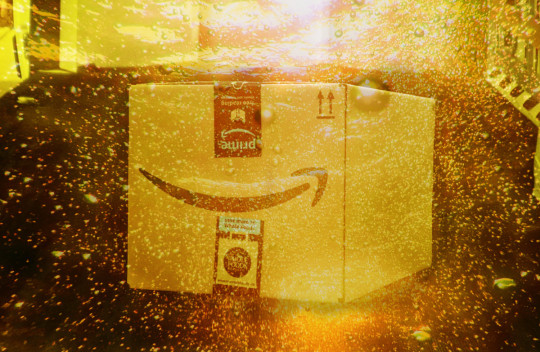
Today (Oct 20), I'm in Charleston, WV at Charleston's Taylor Books from 12h-14h.

For a brief time this year, the bestselling "bitter lemon drink" on Amazon was "Release Energy," which consisted of the harvested urine of Amazon delivery drivers, rebottled for sale by Catfish UK prankster Oobah Butler in a stunt for a new Channel 4 doc, "The Great Amazon Heist":
https://www.channel4.com/programmes/the-great-amazon-heist
Collecting driver piss is surprisingly easy. Amazon, you see, puts its drivers on a quota that makes it impossible for them to drive safely, park conscientiously, or, indeed, fulfill their basic human biological needs. Amazon has long waged war on its employees' kidneys, marking down warehouse workers for "time off task" when they visit the toilets.
As tales of drivers pissing – and shitting! – in their vans multiplied, Amazon took decisive action. The company enacted a strict zero tolerance policy for drivers returning to the depot with bottles of piss in their vans.
That's where Butler comes in: the roads leading to Amazon delivery depots are lined with bottles of piss thrown out of delivery vans by drivers who don't want to lose their jobs, which made harvesting the raw material for "Release Energy" a straightforward matter.
Butler was worried that he wouldn't be able to list his product on Amazon because he didn't have the requisite "food and drinks licensing" certificates, so he listed his drink in Amazon's refillable pump dispenser category. But Amazon's systems detected the mismatch and automatically shifted the product into the drinks section.
Butler enlisted some confederates to place orders for his drink, and it quickly rocketed to the top of Amazon's listings for the category, which led to Amazon's recommendation engine pushing the item on people who weren't in on the gag. When these orders came in, Butler pulled the plug, but not before an Amazon rep telephoned him to pitch him turning packaging, shipping and fulfillment over to Amazon:
https://www.wired.com/story/amazon-let-its-drivers-urine-be-sold-as-an-energy-drink/
The Release Energy prank was just one stunt Butler pulled for his doc; he also went undercover at an Amazon warehouse, during a period when Amazon hired an extra 1,000 workers for its warehouses in Coventry, UK, in a successful bid to dilute pro-union sentiment in his workforce in advance of a key union vote:
https://jacobin.com/2023/10/the-great-amazon-heist-oobah-butler-review
Butler's stint as an Amazon warehouse worker only lasted a couple of days, ending when Amazon recognized him and fired him.
The contrast between Amazon's ability to detect an undercover reporter and its inability to spot bottles of piss being marketed as bitter lemon energy drink says it all, really. Corporations like Amazon hire vast armies of "threat intelligence" creeps who LARP at being CIA superspies, subjecting employees and activists to intense and often illegal surveillance.
But while Amazon's defensive might is laser-focused on the threat of labor organizers and documentarians, the company can't figure out that one of its bestselling products is bottles of its tormented drivers' own urine.
In the USA, the FTC is suing Amazon for its monopolistic tactics, arguing that the company has found ways to raise prices and reduce quality by trapping manufacturers and sellers with its logistics operation, taking $0.45-$0.51 out of every dollar they earn and forcing them to raise prices at all retailers:
https://pluralistic.net/2023/04/25/greedflation/#commissar-bezos
The Release Energy stunt shows where Amazon's priorities are. Not only did Release Energy get listed on Amazon without any quality checks, the company actually nudged it into a category where it was more likely to be consumed by a person. The only notice the company took of Release Energy was in its logistics and manufacturing department – the part of the business that extracts the monopoly rents at issue in the FTC case – which tracked Butler down in order to sell him these services.
The drivers whose piss Butler collected don't work directly for Amazon, they work for a Delivery Service Partner. These DSPs are victims of a pyramid scheme that Amazon set up. DSP operators lease vans and pay to have them skinned in Amazon livery and studded with Amazon sensors. They take out long-term leases on depots, and hire drivers who dress in Amazon uniforms. Their drivers are minutely monitored by Amazon, down to the movements of their eyeballs.
But none of this is "Amazon" – it's all run by an "entrepreneur," whom Amazon can cut loose without notice, leaving them with unfairly terminated employees, outstanding workers' comp claims, a fleet of Amazon-skinned vehicles and unbreakable facilities leases:
https://pluralistic.net/2022/04/17/revenge-of-the-chickenized-reverse-centaurs/
Speaking to Wired, Amazon denied that it forces its drivers to piss in bottles, but Butler clearly catches a DSP dispatcher telling drivers "If you pee in a bottle and leave it [in the vehicle], you will get a point for that" – that is, the part you get punished for isn't the peeing, it's the leaving.
Amazon's defense against the FTC is that it spares no effort to keep its marketplace safe. As Amazon spokesperson James Drummond says, they use "industry-leading tools to prevent genuinely unsafe products being listed." But the only industry-leading tools in evidence are tools to bust unions and screw suppliers.
In her landmark Yale Law Review paper, "Amazon's Antitrust Paradox," FTC Chair Lina Khan makes a brilliant argument that Amazon's alleged benefits to "consumers" are temporary at best, illusory at worst:
https://www.yalelawjournal.org/note/amazons-antitrust-paradox
In Butler's documentary, Khan's hypothesis is thoroughly validated: here's a company extracting hundreds of billions from merchants who raise prices to compensate, and those monopoly rents are "invested" in union-busting and countermeasures against investigative journalists, while the tools to keep you from accidentally getting a bottle of piss in the mail are laughably primitive.
Truly, Amazon is the apex predator of the platform era:
https://pluralistic.net/ApexPredator

If you'd like an essay-formatted version of this post to read or share, here's a link to it on pluralistic.net, my surveillance-free, ad-free, tracker-free blog:
https://pluralistic.net/2023/10/20/release-energy/#the-bitterest-lemon

My next novel is The Lost Cause, a hopeful novel of the climate emergency. Amazon won't sell the audiobook, so I made my own and I'm pre-selling it on Kickstarter!
#pluralistic#release energy#channel 4#amazon#corporate intelligence#labor#unions#amazon labor union#the great Amazon heist#catfish uk#oobah butler#delivery service partner
7K notes
·
View notes
Text
Less than three months after U.S. Senator Tammy Baldwin and her colleagues launched an investigation into the four major American manufacturers of inhalers, three of the companies have relented, making commitments to cap costs for their inhalers at $35 for patients who now pay much more.
25 million Americans have asthma and 16 million Americans have chronic obstructive pulmonary disease (COPD), meaning over 40 million Americans rely on inhalers to breathe.
Inhalers have been available since the 1950s, and most of the drugs they use have been on the market for more than 25 years.
According to a statement from the Wisconsin Senator’s office, inhaler manufacturers sell the exact same products at a much lower costs in other countries. One of AstraZeneca’s inhalers, Breztri Aerosphere, costs $645 in the U.S.—but just $49 in the UK. Inhalers made by Boehringer Ingelheim, GlaxoSmithKline, and Teva have similar disparities.
Baldwin and her Democratic colleagues—New Mexico Sen. Ben Ray Luján, Massachusetts Sen. Ed Markey, and Vermont Sen. Bernie Sanders—pressured the companies to lower their prices by writing letters to GSK, Boehringer Ingelheim, Teva, and AstraZeneca requesting a variety of documents that show why such higher prices are charged in America compared to Europe.
As a ranking member of the Senate Committee on Health, Education, Labor, and Pensions, Baldwin recently announced that as a result of the letters they had secured commitments from three of the four to lower the out-of-pocket costs of inhalers to a fixed $35.00 rate.
“For the millions of Americans who rely on inhalers to breathe, this news is a major step in the right direction as we work to lower costs and hold big drug companies accountable,” said Senator Baldwin.
A full list of the inhalers and associated drugs can be viewed here.
It’s the second time in the last year that pharmaceutical companies were forced to provide reasonable prices—after the cost of insulin was similarly capped successfully at $35 per month thanks to Congressional actions led by the White House.
-via Good News Network, March 25, 2024
#united states#us politics#us senate#tammy baldwin#bernie sanders#big pharma#health care#us healthcare#inhaler#asthma#pulmonary disease#healthcare access#affordability#disability#good news#hope
4K notes
·
View notes
Text

Get The Distributorship of Natural Black Hair Colour.
Experience the natural goodness of charcoal soap! Become a distributor and unlock endless possibilities with Go4Distributors. They connect you with the right dealers and distributors for a successful business venture.
Read Also:- Natural Black Hair Colour
Visit:- https://www.go4distributors.com
Contact:- +918800922392
Mail:- [email protected]
Facebook:- https://www.facebook.com/go4distributors
Twitter:- https://twitter.com/go4distributors
#Consumer Electronics Distributors#Consumer Electronics distributorship opportunities#electronics products distributorship#electronics manufacturers#electronics products distributors#electronic appliances wholesalers#capacitor manufacturers#ear phones distributorship#Ceiling Fans distributors#water purifiers manufacturers#led tv distributorship#electronics components distributorship
0 notes
Text
How to prevent fire accidents caused by LED display
It is very important to prevent fire accidents caused by LED displays, and the following are some preventive measures:
Compliance testing and certification: Select LED display products that meet safety standards and certification requirements. Ensure that the LED display complies with the relevant national and regional safety certification standards, such as CE, RoHS, UL, etc. These certification marks ensure that products meet safety and reliability requirements.

Regular maintenance and inspection: Regular maintenance and inspection of the LED display to ensure its normal work and safe operation. Check whether the wires, power supplies, and connectors are normal to prevent fires caused by aging, short circuit, or loose wires.
Good ventilation system: Provide a good ventilation system for the LED display to ensure that the heat can be effectively dissipated. Overheating is one of the common causes of fire, so make sure there are no deposits or blockages around the display and keep it well ventilated.
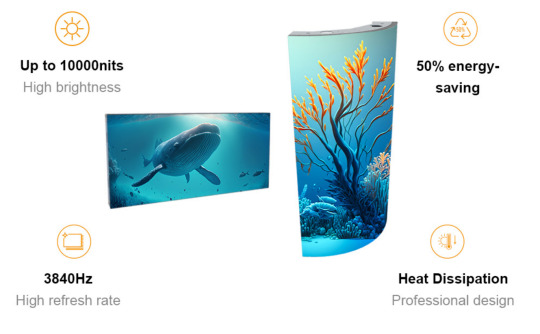
Reasonable installation and wiring: The installation and wiring of LED displays need to be carried out in accordance with the manufacturer's instructions and follow the relevant electrical safety specifications. Avoid wires wrapped around metal structures or entangled with other wires to reduce the risk of fire. Free LED display installation guide.
Ensure safe power supply: Use power supplies and wires that meet safety requirements. Ensure that the power supply voltage and frequency match the requirements of the LED display. Do not exceed the rated current and power that the display can withstand.
Prevent static electricity: When handling LED displays, take appropriate anti-static measures. Static electricity can damage electronic components and cause fires. Use ESD devices, ground cables, and ESD workstations to ensure that the display is properly handled and installed.
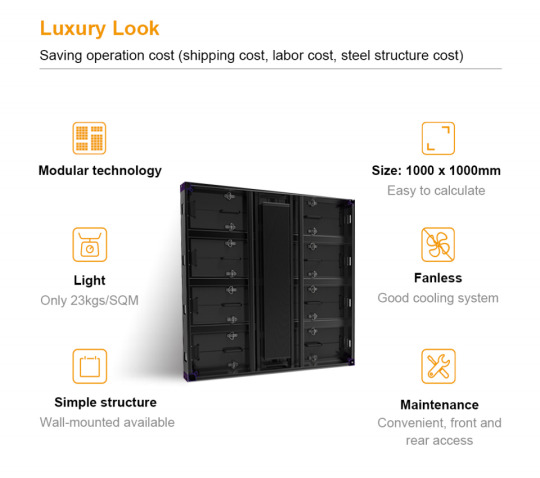
Add a fire alarm system: Install a fire alarm system around the LED display for early detection and treatment of potential fire risks. Ensure that the fire alarm system is connected to the power and control system of the display screen, so that the alarm can be issued in time and appropriate countermeasures can be taken.
Training and awareness raising: Provide appropriate training and education to staff so that they understand the safe operation and maintenance requirements of LED displays. Raise staff awareness of fire risks and educate them on proper emergency handling and escape procedures.
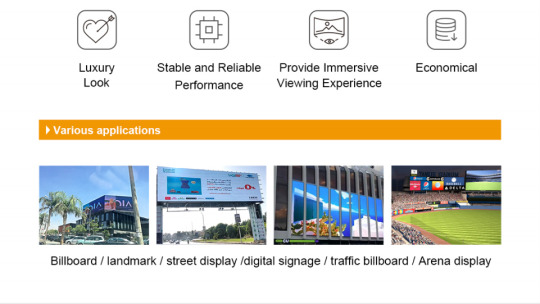
In short, the prevention of LED display resulting in fire accidents requires comprehensive consideration of design, installation, maintenance and training and other aspects. Following relevant safety standards and specifications, regularly inspecting and maintaining equipment, maintaining good ventilation and electrical safety, strengthening staff training and raising awareness can all effectively reduce the risk of fire.
Thank you for watching. I hope we can solve your problems. Sostron is a professional LED display manufacturer. We provide all kinds of displays, display leasing and display solutions around the world. If you want to know: How does the LED display industry break through the chip shortboard? Please click read.
Follow me! Take you to know more about led display knowledge.
Contact us on WhatsApp:https://api.whatsapp.com/send/?phone=8613570218702&text&type=phone_number&app_absent=0
0 notes
Text
Police officers could solve real problems. They could be out there feeding hot soup to the unhoused, making sure that hazardous garbage is kept away from daycares, or doing something about all these birds that keep shitting on my car. Instead of those productive things, Officer Bringdown is here, on the side of the road, spending my tax money to hand me a ticket for more of my money.
Or at least he would be, if he could figure out how to work his dorky little ticket printer. You see, I have an ace up my sleeve. Not only is my car old, and difficult to place, but I’ve made certain modifications to the vehicle that render its legal state “complicated.” My shark of an attorney, Max, brags about the bear trap of intermingled kit-car laws and year-of-manufacture exclusions that have led to this vehicle being one hundred percent approved-of by the government, in any condition I dictate, whether they meant to or not.
“Uhh, how do you spell ‘Duesenberg’ again?” the cop asks, betraying his lack of education in the classics. I spell it out for him, and explain again that the replica registration exception of December 1986 means that a 1921 Model J does not need to have operational turn signals or a functional speedometer.
“How is this a replica of a 1921 car? It says Plymouth on the hood.” he asks me suspiciously, behind mirrored aviator shades. I am familiar with this shift in conversation. I see now that he has fallen into the first legal pit without complaint. I was hoping for a more worthy opponent.
“Officer, has the state rendered upon you an encyclopedic knowledge and unimpeachable legal authority of what a 1921 Duesenberg Model J consists and does not consist of?” I ask him, reading off a sheet that has been provided by my attorney, who would really rather that I shut the fuck up entirely, but who I know secretly thrills at the chance to end another state trooper’s career in the court of law in which he is akin to a walking god. Dude has groupies.
The cop demurs, tries to change the subject, save some face. “What’s that smell?” he asks.
“Hydrazine.”
10K notes
·
View notes
Link

#led product manufacturer#led product#led product distributors#led light#manufacturer#supplier#dealers#distributors#wholesalers#b2b#new year 2023
0 notes
Text

LED UFO HIGHBAYS
LED UFO ROUND HIGH BAY TL-RHB1™ SERIES
LED UFO Round High Bay is industry leading in high ambient temperatures and designed to withstand moisture, dust, and airborne contaminants. 100% Mercury & Lead Free.
#led wall light manufacturers#led downlights suppliers#looking for led light supplier#led bulb manufacturer near me#led products manufacturers#top led panel manufacturers#led products#led downlights manufacturers#led downlights usa#led downlight factory#led wall light manufacturer#smart lighting industries#lighting industry#industrial outdoor commercial lighting#commercial and industrial lighting#led shoebox parking lot lights#led high bay lighting retrofit#led shoebox lighting fixtures#led retrofit canopy lights#led light fixture manufacturers#down light manufacturer#commercial indoor lighting fixtures#industrial indoor led lighting#commercial led manufacturer#led canopy light manufacturers#outdoor lighting manufacturers usa#industrial high bay led lighting fixtures#industrial led linear bay#led high bay manufacturers#canopy and lights
0 notes
Text
#Industrial Robots Market is expected to reach value of US$ 55.66 Billion by registering a CAGR of 12% from 2022-2032 | Future Market Insight#Inc.#A recently published study by FMI expects the global industrial robots market to augment at a 12% CAGR from 2022 to 2032. By the end of the#a valuation of US$ 55.66 Billion is expected for the market. Increasing adaption of industrial robots in end user industries such as automo#food & beverage and pharmaceutical industry is positively influencing the growth of the market.#From 2017 to 2021#the industry experienced noteworthy growth#registering a value CAGR of 9% and closing at US$ 16 Billion. Although#the COVID-19 pandemic affected the growth of industrial robots#the need for automation is driving the demand for the same. Furthermore#industrial robots are not saving time at manufacturing units but also accelerating productivity rates. This has led to the dependency on in#To Know More @#https://www.futuremarketinsights.com/reports/industrial-robots-market
0 notes
Text
all-types-of-led-light-products
0 notes
Text
Floodlights are excellent lighting fixtures with a broad light beam. As their name implies, they are intended to flood an area with light. It is the most effective way to provide a significant amount of artificial light into space. In addition to being extremely energy-efficient, LED flood lights produce more brightness per watt than any other type of conventional LED Smart Solutions. They are used for many purposes and complement various lighting schemes.
#LED Light Manufacturers in Dubai#LED Products Manufacturing Company#Premium LED Lighting Company in Dubai#Buy Flood Lights in Dubai#Buy Gypsum Lights in Dubai#Buy Estilo Spot Lights Online
0 notes
Text
Boeing’s deliberately defective fleet of flying sky-wreckage
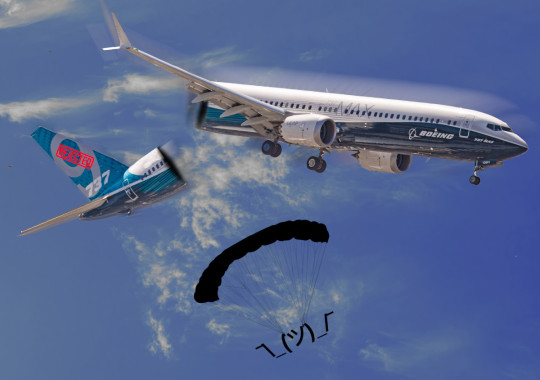
I'm touring my new, nationally bestselling novel The Bezzle! Catch me TOMORROW (May 2) in WINNIPEG, then Calgary (May 3), Vancouver (May 4), Tartu, Estonia, and beyond!

Boeing's 787 "Dreamliner" is manufactured far from the company's Seattle facility, in a non-union shop in Charleston, South Carolina. At that shop, there is a cage full of defective parts that have been pulled from production because they are not airworthy.
Hundreds of parts from that Material Review Segregation Area (MRSA) were secretly pulled from that cage and installed on aircraft that are currently plying the world's skies. Among them, sections 47/48 of a 787 – the last four rows of the plane, along with its galley and rear toilets. As Moe Tkacik writes in her excellent piece on Boeing's lethally corrupt culture of financialization and whistleblower intimidation, this is a big ass chunk of an airplane, and there's no way it could go missing from the MRSA cage without a lot of people knowing about it:
https://prospect.org/infrastructure/transportation/2024-04-30-whistleblower-laws-protect-lawbreakers/
More: MRSA parts are prominently emblazoned with red marks denoting them as defective and unsafe. For a plane to escape Boeing's production line and find its way to a civilian airport near you with these defective parts installed, many people will have to see and ignore this literal red flag.
The MRSA cage was a special concern of John "Swampy" Barnett, the Boeing whistleblower who is alleged to have killed himself in March. Tkacik's earlier profile of Swampy paints a picture of a fearless, stubborn engineer who refused to go along to get along, refused to allow himself to become inured to Boeing's growing culture of profits over safety:
https://prospect.org/infrastructure/transportation/2024-03-28-suicide-mission-boeing/
Boeing is America's last aviation company and its single largest exporter. After the company was allowed to merge with its rival McDonnell-Douglas in 1997, the combined company came under MDD's notoriously financially oriented management culture. MDD CEO Harry Stonecipher became Boeing's CEO in the early 2000s. Stonecipher was a protege of Jack Welch, the man who destroyed General Electric with cuts to quality and workforce and aggressive union-busting, a classic Mafia-style "bust-out" that devoured the company's seed corn and left it a barren wasteland:
https://qz.com/1776080/how-the-mcdonnell-douglas-boeing-merger-led-to-the-737-max-crisis
Post-merger, Boeing became increasingly infected with MDD's culture. The company chased cheap, less-skilled labor to other countries and to America's great onshore-offshore sacrifice zone, the "right-to-work" American south, where bosses can fire uppity workers who balked at criminal orders, without the hassle of a union grievance.
Stonecipher was succeeded by Jim "Prince Jim" McNerney, ex-3M CEO, another Jack Welch protege (Welch spawned a botnet of sociopath looters who seized control of the country's largest, most successful firms, and drove them into the ground). McNerney had a cute name for the company's senior engineers: "phenomenally talented assholes." He created a program to help his managers force these skilled workers – everyone a Boeing who knew how to build a plane – out of the company.
McNerney's big idea was to get rid of "phenomenally talented assholes" and outsource the Dreamliner's design to Boeing's suppliers, who were utterly dependent on the company and could easily be pushed around (McNerney didn't care that most of these companies lacked engineering departments). This resulted in a $80b cost overrun, and a last-minute scramble to save the 787 by shipping a "cleanup crew" from Seattle to South Carolina, in the hopes that those "phenomenally talented assholes" could save McNerney's ass.
Swampy was part of the cleanup crew. He was terrified by what he saw there. Boeing had convinced the FAA to let them company perform its own inspections, replacing independent government inspectors with Boeing employees. The company would mark its own homework, and it swore that it wouldn't cheat.
Boeing cheated. Swampy dutifully reported the legion of safety violations he witnessed and was banished to babysit the MRSA, an assignment his managers viewed as a punishment that would isolate Swampy from the criminality he refused to stop reporting. Instead, Swampy audited the MRSA, and discovered that at least 420 defective aviation components had gone missing from the cage, presumably to be installed in planes that were behind schedule. Swampy then audited the keys to the MRSA and learned that hundreds of keys were "floating around" the Charleston facility. Virtually anyone could liberate a defective part and install it into an airplane without any paper trail.
Swampy's bosses had a plan for dealing with this. They ordered Swampy to "pencil whip" the investigations of 420 missing defective components and close the cases without actually figuring out what happened to them. Swampy refused.
Instead, Swampy took his concerns to a departmental meeting where 12 managers were present and announced that "if we can’t find them, any that we can’t find, we need to report it to the FAA." The only response came from a supervisor, who said, "We’re not going to report anything to the FAA."
The thing is, Swampy wasn't just protecting the lives of the passengers in those defective aircraft – he was also protecting Boeing employees. Under Sec 38 of the US Criminal Code, it's a 15-year felony to make any "materially false writing, entry, certification, document, record, data plate, label, or electronic communication concerning any aircraft or space vehicle part."
(When Swampy told a meeting that he took this seriously because "the paperwork is just as important as the aircraft" the room erupted in laughter.)
Swampy sent his own inspectors to the factory floor, and they discovered "dozens of red-painted defective parts installed on planes."
Swampy blew the whistle. How did the 787 – and the rest of Boeing's defective flying turkeys – escape the hangar and find their way into commercial airlines' fleets? Tkacik blames a 2000 whistleblower law called AIR21 that:
creates such byzantine procedures, locates adjudication power in such an outgunned federal agency, and gives whistleblowers such a narrow chance of success that it effectively immunizes airplane manufacturers, of which there is one in the United States, from suffering any legal repercussions from the testimony of their own workers.
By his own estimation, Swampy was ordered to commit two felonies per week for six years. Tkacik explains that this kind of operation relies on a culture of ignorance – managers must not document their orders, and workers must not be made aware of the law. Whistleblowers like Swampy, who spoke the unspeakable, were sidelined (an assessment by one of Swampy's managers called him "one of the best" and finished that "leadership would give hugs and high fives all around at his departure").
Multiple whistleblowers were singled out for retaliation and forced departure. William Hobek, a quality manager who refused to "pencil whip" the missing, massive 47-48 assembly that had wandered away from the MRSA cage, was given a "weak" performance review and fired despite an HR manager admitting that it was bogus.
Another quality manager, Cynthia Kitchens, filed an ethics complaint against manager Elton Wright who responded to her persistent reporting of defects on the line by shoving her against a wall and shouting that Boeing was "a good ol’ boys’ club and you need to get on board." Kitchens was fired in 2016. She had cancer at the time.
John Woods, yet another quality engineer, was fired after he refused to sign off on a corner-cutting process to repair a fuselage – the FAA later backed up his judgment.
Then there's Sam Salehpour, the 787 quality engineer whose tearful Congressional testimony described more corner-cutting on fuselage repairs:
https://www.youtube.com/watch?v=PP0xhIe1LFE
Salehpour's boss followed the Boeing playbook to the letter: Salehpour was constantly harangued and bullied, and he was isolated from colleagues who might concur with his assessment. When Salehpour announced that he would give Congressional testimony, his car was sabotaged under mysterious circumstances.
It's a playbook. Salehpour's experience isn't unusual at Boeing. Two other engineers, working on the 787 Organization Designation Authorization, held up production by insisting that the company fix the planes' onboard navigation computers. Their boss gave them a terrible performance review, admitting that top management was furious at the delays and had ordered him to punish the engineers. The engineers' union grievance failed, with Boeing concluding that this conduct – which they admitted to – didn't rise to the level of retaliation.
As Tkacik points out, these engineers and managers that Boeing targeted for intimidation and retaliation are the very same staff who are supposed to be performing inspections of behalf of the FAA. In other words, Boeing has spent years attacking its own regulator, with total impunity.
But it's not just the FAA who've failed to take action – it's also the DOJ, who have consistently declined to bring prosecutions in most cases, and who settled the rare case they did bring with "deferred prosecution agreements." This pattern was true under Trump's DOJ and continued under Biden's tenure. Biden's prosecutors have been so lackluster that a federal judge "publicly rebuked the DOJ for failing to take seriously the reputational damage its conduct throughout the Boeing case was inflicting on the agency."
Meanwhile, there's the AIR21 rule, a "whistleblower" rule that actually protects Boeing from whistleblowers. Under AIR21, an aviation whistleblower who is retaliated against by their employer must first try to resolve their problem internally. If that fails, the whistleblower has only one course of action: file an OSHA complaint within 90 days (if HR takes more than 90 days to resolve your internal complaint, you can no have no further recourse). If you manage to raise a complaint with OSHA, it is heard by a secret tribunal that has no subpoena power and routinely takes five years to rule on cases, and rules against whistleblowers 97% of the time.
Boeing whistleblowers who missed the 90-day cutoff have filled the South Carolina courts with last-ditch attempts to hold the company to account. When they lose these cases – as is routine, given Boeing's enormous legal muscle and AIR21's legal handcuffs – they are often ordered to pay Boeing's legal costs.
Tkacik cites Swampy's lawyer, Rob Turkewitz, who says Swampy was the only one of Boeing's whistleblowers who was "savvy, meticulous, and fast-moving enough to bring an AIR 21 case capable of jumping through all the hoops" to file an AIR21 case, which then took seven years. Turkewitz calls Boeing South Carolina "a criminal enterprise."
That's a conclusion that's hard to argue with. Take Boeing's excuse for not producing the documentation of its slapdash reinstallation of the Alaska Air door plug that fell off its plane in flight: the company says it's not criminally liable for failing to provide the paperwork, because it never documented the repair. Not documenting the repair is also a crime.
You might have heard that there's some accountability coming to the Boeing boardroom, with the ouster of CEO David Calhoun. Calhoun's likely successor is Patrick Shanahan, whom Tkacik describes as "the architect of the ethos that governed the 787 program" and whom her source called "a classic schoolyard bully."
If Shanahan's name rings a bell, it might be because he was almost Trump's Secretary of Defense, but that was derailed by the news that he had "emphatically defended" his 17 year old son after the boy nearly beat his mother to death with a baseball bat. Shanahan is presently CEO of Spirit Aerospace, who made the door-plug that fell out of the Alaska Airlines 737 Max.
Boeing is a company where senior managers only fail up and where whistleblowers are terrorized in and out of the workplace. One of Tkacik's sources noticed his car shimmying. The source, an ex-787 worker who'd been fired after raising safety complaints, had tried to bring an AIR21 complaint, but withdrew it out of fear of being bankrupted if he was ordered to pay Boeing's legal costs. When the whistleblower pulled over, he discovered that two of the lug-nuts had been removed from one of his wheels.
The whistleblower texted Tkcacik to say (not for the first time): "If anything happens, I'm not suicidal."
Boeing is a primary aerospace contractor to the US government. It's clear that its management – and investors – consider it too big to jail. It's also clear that they know it's too big to fail – after all, the company did a $43b stock buyback, then got billions in a publicly funded buyback.
Boeing is, effectively, a government agency that is run for the benefit of its investors. It performs its own safety inspections. It investigates its own criminal violations of safety rules. It loots its own coffers and then refills them at public expense.
Meanwhile, the company has filled our skies with at least 420 airplanes with defective, red-painted parts that were locked up in the MRSA cage, then snuck out and fitted to an airplane that you or someone you love could fly on the next time you take your family on vacation or fly somewhere for work.

If you'd like an essay-formatted version of this post to read or share, here's a link to it on pluralistic.net, my surveillance-free, ad-free, tracker-free blog:
https://pluralistic.net/2024/05/01/boeing-boeing/#mrsa

Image:
Tom Axford 1 (modified)
https://commons.wikimedia.org/wiki/File:Blue_sky_with_wisps_of_cloud_on_a_clear_summer_morning.jpg
CC BY-SA 4.0
https://creativecommons.org/licenses/by-sa/4.0/deed.en
--
Clemens Vasters (modified)
https://commons.wikimedia.org/wiki/File:N7379E_-_Boeing_737_MAX_9.jpg
CC BY 2.0
https://creativecommons.org/licenses/by/2.0/deed.en
#pluralistic#mrsa#Material Review Segregation Area#787#dreamliner#swampy#faa#marking your own homework#monopolies#AS9100#Cynthia Kitchens#Sam Salehpour#737 max#ntsb#David Calhoun#boeing#whistleblowers#aviation#safety#John Barnett#maureen tkacik#Patrick Shanahan
667 notes
·
View notes
Text
10 Tips For Getting a Consumer Electronics Distributorship.
Go4distributors help in appointing dealers and distributors for Consumer Electronics Distributors in India by providing a platform for manufacturers and distributors to connect with each other. The platform also offers a variety of resources to help manufacturers and distributors succeed, such as marketing tips, financial advice, and legal guidance.
Visit:- Go4distributors
Contact:- +918800922392
Mail:- [email protected]
Facebook:- https://www.facebook.com/go4distributors
Twitter:- https://twitter.com/go4distributors
#Consumer Electronics Distributors#Consumer Electronics distributorship opportunities#electronics products distributorship#electronics manufacturers#electronics products distributors#electronic appliances wholesalers#capacitor manufacturers#ear phones distributorship#Ceiling Fans distributors#water purifiers manufacturers#led tv distributorship#electronics components distributorship#go4distributors.com
0 notes